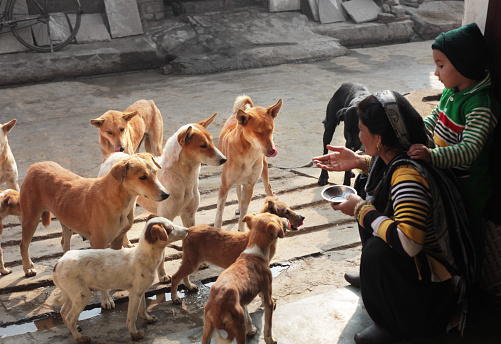
Barring a few countries, rabies is endemic in both humans and animals in most countries in the Asia and Pacific Region, with over 95% of human rabies cases associated with dog bites. For the effective control and elimination of dog-mediated rabies, a minimum of 70% vaccine coverage in susceptible dog populations is needed.
However, in many rabies-endemic countries in the region, owing to substantial numbers of free-roaming dogs that are difficult to catch for catch-vaccinate-release vaccination, countries do not achieve the required vaccination coverage. Oral rabies vaccines (ORVs) have been used successfully in eliminating sylvatic rabies from the wildlife reservoirs (red foxes, raccoons, etc.) in North America and Europe.
is endemic in both humans and animals in most countries in the Asia and Pacific region, with over 95% of human rabies cases associated with dog bites.
Although there are currently no examples of use of ORVs as part of the official dog-mediated rabies elimination programmes, research studies are currently underway in many countries focusing on the application of ORVs as a tool in complementing parenteral vaccination in dogs. There is clear interest from countries in the region to learn and understand more about ORVs and their use in complementing dog rabies vaccination.
The Manual of Diagnostic Tests and Vaccines for Terrestrial Animals 2021 (Chapter 3.1.17) recommends the use of oral rabies vaccines in dogs, with necessary safety and efficacy trials to complement parenteral mass dog vaccination (MDV) programs. This is especially important in areas where dogs are an important reservoir of rabies virus.
The WOAH Regional Representation for Asia and the Pacific (WOAH RRAP) thus organised a virtual workshop on oral rabies vaccines (ORVs) on 28 February with the following objectives:
A total of 125 participants including participants representing official veterinary services, veterinary schools, NGOs, and other agencies working on rabies control from 21 countries in the Asia Pacific Region attended the workshop. Experts from the WOAH Reference Laboratory in Germany, WOAH HQ, Ceva Santé Animale, US CDC, Mission Rabies, and Kasetsart University of Thailand provided latest updates on various aspects of ORVs such as the concepts of ORVs and its usage in wildlife; proof of concept for use in dogs; its safety and efficacy based on field trials; production and supply issues; OIE Standards; and status of use of ORVs in the region.
Following this workshop, the WOAH RRAP will follow up with our Members for potential piloting of ORV baits and ORVs in the interested countries. We will start contacting potential countries from April 2022 onwards.
The details of the workshop including the agenda and the presentations can be accessed here. For further details, please contact us at [email protected]
Banner Photo: Simon Berger | Unsplash


